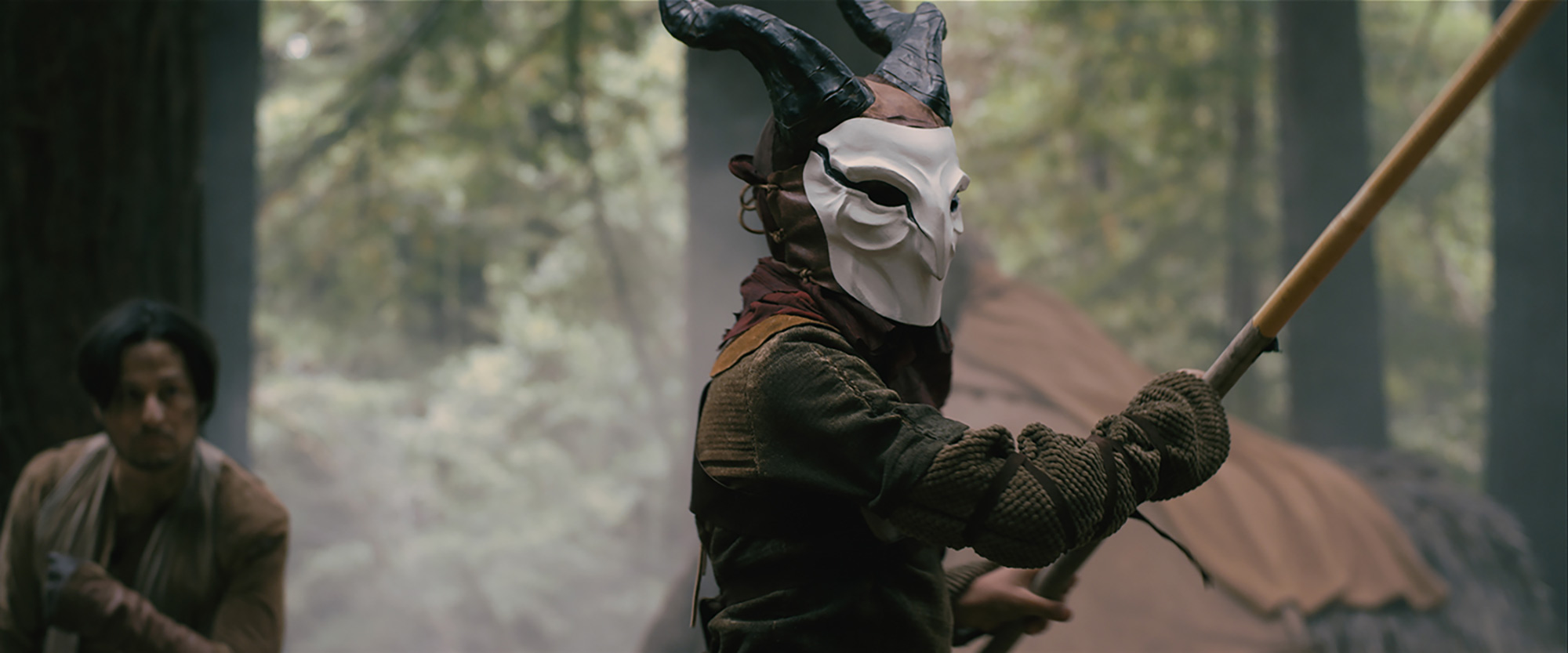
Wanting to stretch their creative muscles beyond the day to day comfort zone of advertising client work, Director David Bousquet and Producer Kristin Bousquet dived head long into the cinematic challenge of the fantasy action genre for LOOKOUTS, a short film adaptation of Penny Arcade’s comic of the same name. DN asked David to share how they brought together practical effects, monster building and a bi-linear storyline in the misty overgrowth of Mendocino’s redwood forests for this debut exploration into classic narrative filmmaking.
Storytelling
LOOKOUTS opens with a voice saying, “What is a basilisk?” This is the fundamental question of the whole film and represents the entire story arc of Pehn’s character, who we follow from the opening frame to the last. Like the audience, Pehn doesn’t know what a Basilisk is at the beginning of the story, but by its conclusion he knows all too well. You could take it a step further and swap ‘Basilisk’ with ‘fear’. Pehn struggles with his fears throughout the film. The fear of loss, the fear of the unknown, the fear of his own frailty and the fear of disappointment. Like the winged titan that pursues him through the surface narrative, there’s a deeper aggressor in the form of ‘fear’ that appears when we reveal the events leading to Pehn’s ambush by the beast. He must first overcome his fear before he can face the Basilisk. That’s a lot to cover in 10 minutes.
The true challenge of this film is the question all films struggle with, “Why do we care?”
The Challenge of LOOKOUTS
I mean, let’s be real about the limitations of short filmmaking. It’s SHORT. But that’s OK because Kristin Bousquet (Producer) and I (David Bousquet, Director) earn our stripes on the battle fields of advertising where short format storytelling is the rule, not the exception. With LOOKOUTS, we celebrated the constraints of a compressed timeframe and strategically used time to our advantage by breaking the traditional linear sequence of most shorts. Our plan wasn’t to cram a feature script into a ten minute short, or simply tell one scene of a longer, implied narrative. I’ve never understood those approaches however common they might be. Rather, realize that the true challenge of this film is the question all films struggle with, “Why do we care?” If the story just followed a kid running through the woods then the answer is obvious, you don’t. Or at least, I wouldn’t. So we broke up the narrative timeline to allow for backstory that actually services the story’s progression and shapes Pehn’s character, which is the emotional catalyst of the whole film. Pehn was a tricky character to write. If he’s too frail, the film becomes ‘mean spirited’. If he’s too tough, you lose empathy and become critical of his cowardice. You have to like Pehn, even though he isn’t really a hero. You can’t build a relationship with a character from the ground up in 10 minutes and try to pack in all the action as well, but you can present existing relationships that feel genuine and hope the audience buys into those. In LOOKOUTS, Pehn’s mother and his mentor and the two primary relationships we wanted to establish. Designing dialogue that progresses the narrative while dancing around the unspoken subtext of their conversation was really important.
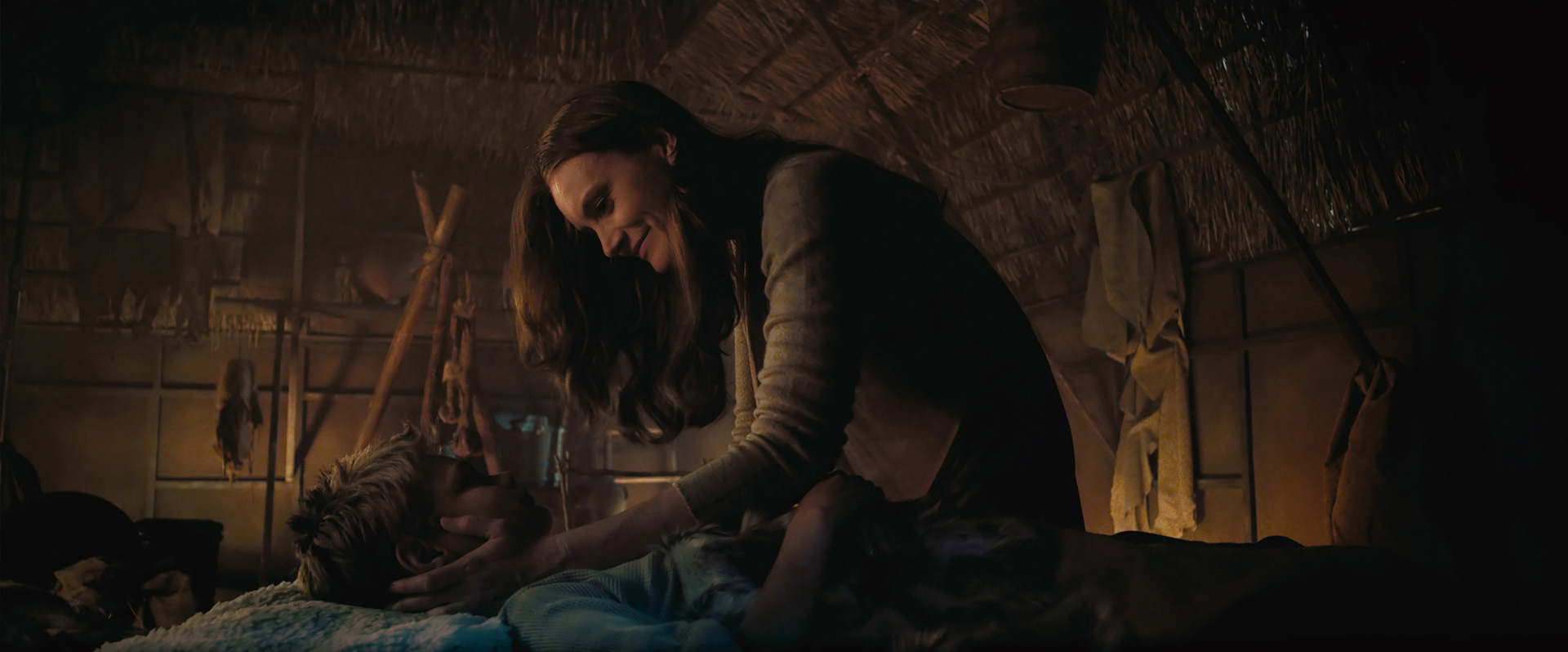
Narrative Structure
LOOKOUTS follows a bi-linear story-line, meaning the same story is split into parallel timelines. We’re first introduced to the ‘real-time’ chase, where Pehn’s troop is ambushed (opening scene) and he spends the rest of the film trying to escape death. It happens over the course of minutes or hours. The second timeline is an expanded jump through time that is triggered by Pehn’s memories. Both timelines progress in a linear order but at different intervals. Whereas one is virtually real-time, the other is over months or years. These aren’t traditional ‘flashbacks’ because the information in these memories benefits both Pehn and the viewer. It’s never just context for the viewer and it’s never just a motivating memory for the scout. Both Pehn and the viewer progress through the story at an equal rate despite the jumps through time. You know the story is complete because we actually bookended Pehn’s arc with the same visuals, but reversed. The first time we see Pehn in the hut, he’s holding a small stone Basilisk statue in his hands as he asks the question, “but what IS a Basilisk?”. The last visual of the film shows Pehn leaping into the grip of the Basilisk’s enormous talons. Question answered.
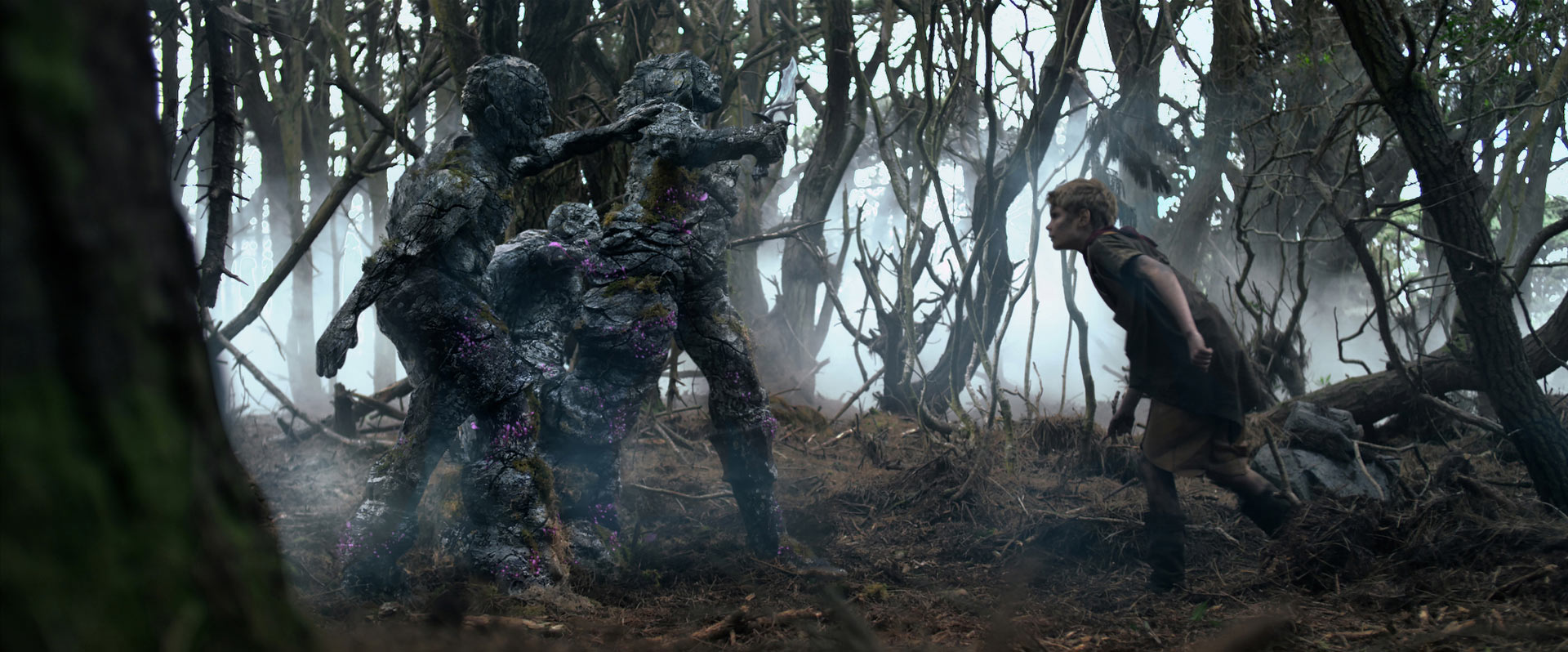
Every Frame Matters
The LOOKOUTS’ scouts are like traditional Boy-Scouts. For this to be a genuine Lookouts story there needed to be a moment of learning because their lives aren’t all about action and adventure. They learn about the forest as much as they explore it. That said, this moment of learning had to tie into the story because every second matters in a short film. The Cinderleaf grows from the rock of frozen people which, aside from creating a morbid visual, ties this moment of learning back to the Basilisk. It also sets up a trigger visual for the audience later in the film when Pehn awakens at the edge of the forest to discover multiple Cinderleaves around a trio of stone Lookouts. The point of this discovery is to demoralize Pehn to the brink of defeat. Allowing him to make that visual connection between the flowers and the statues himself, after the audience already knows, amplifies the sense of despair. I could go on for hours detailing the minutia of every element and scene in this film, but this is probably running long enough. Let’s talk about the production.
Almost every step of this process was a ‘first-time’ experience that was ultimately as ‘gratifying’ in the long term as it was ‘frustrating’ in the short.
Keeping it In-Camera
Making this film was an opportunity to play with creature design, costumes, weapons, exotic settings and fantasy themes that aren’t exactly common in our commercial production lives. We set out to film real locations around Mendocino California with physical sets, costumes, weapons, props, practical VFX and a puppeteered monster. Anytime we had the ability to capture a visual in-camera or record something live and on location, we did. That’s a large part of this film’s challenge and a huge point of pride. This was shot on 6K Red Epic(Dragon) digital cameras. We used a 4K Phantom Flex for the high-speed photography. A 5-ton grip truck was available for the initial 8 days of photography in Mendocino and we went with HMI lamps for most of the shoot. For lighting the night scene and the forest exteriors, M90s and M18s did most of the heavy lifting. We ran a smaller crew for the pickups, creature FX, and the hut interiors.
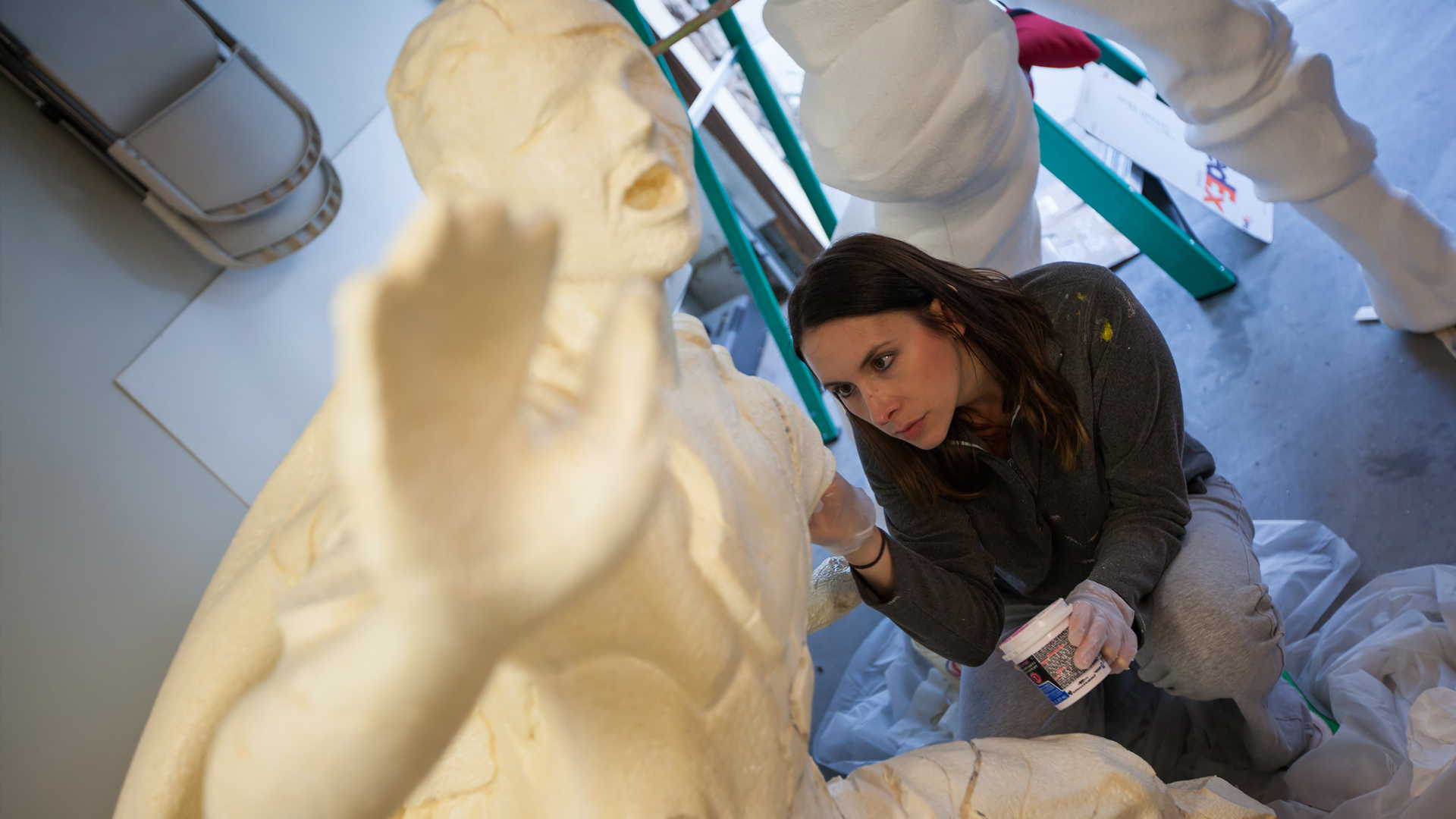




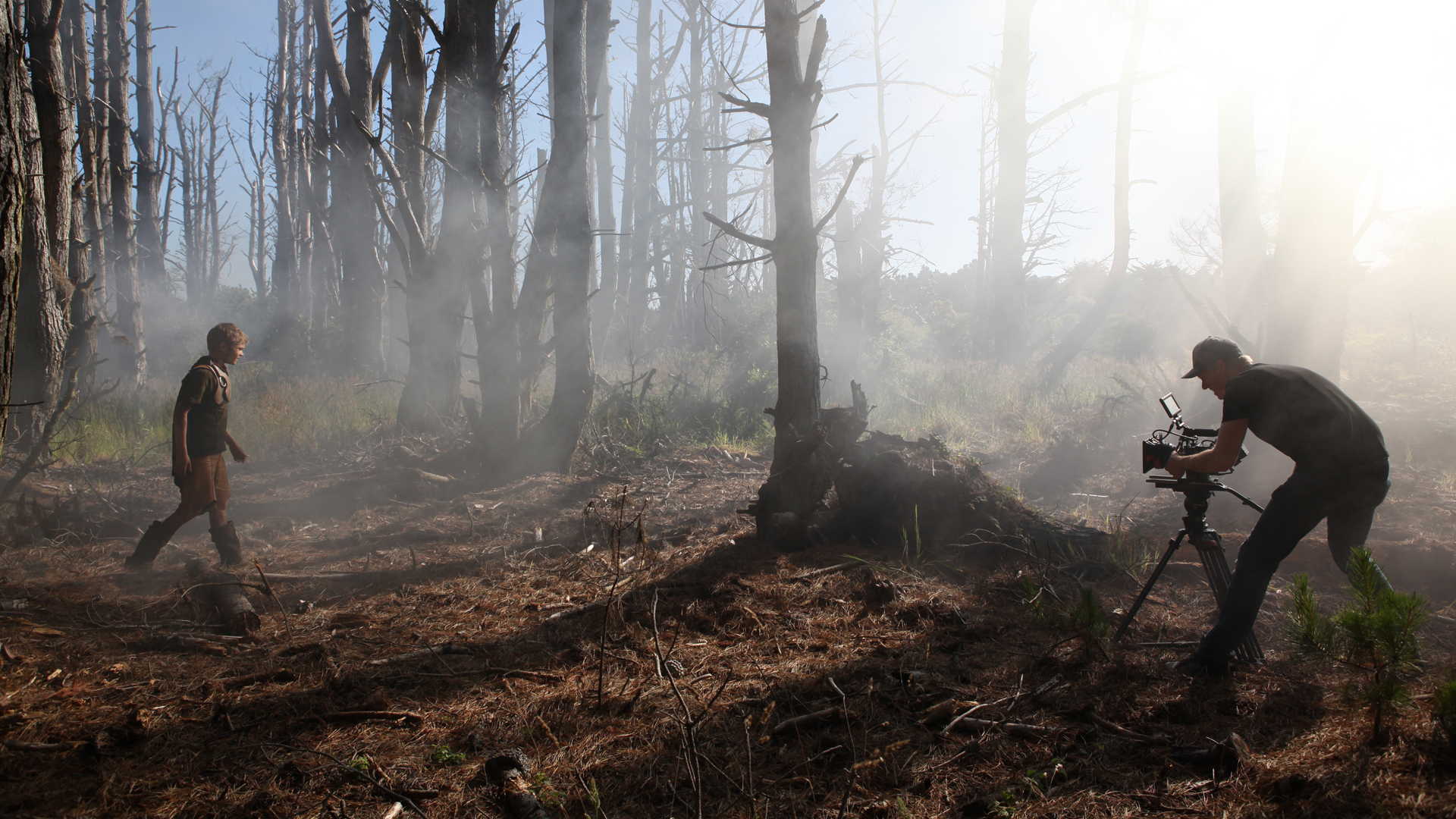


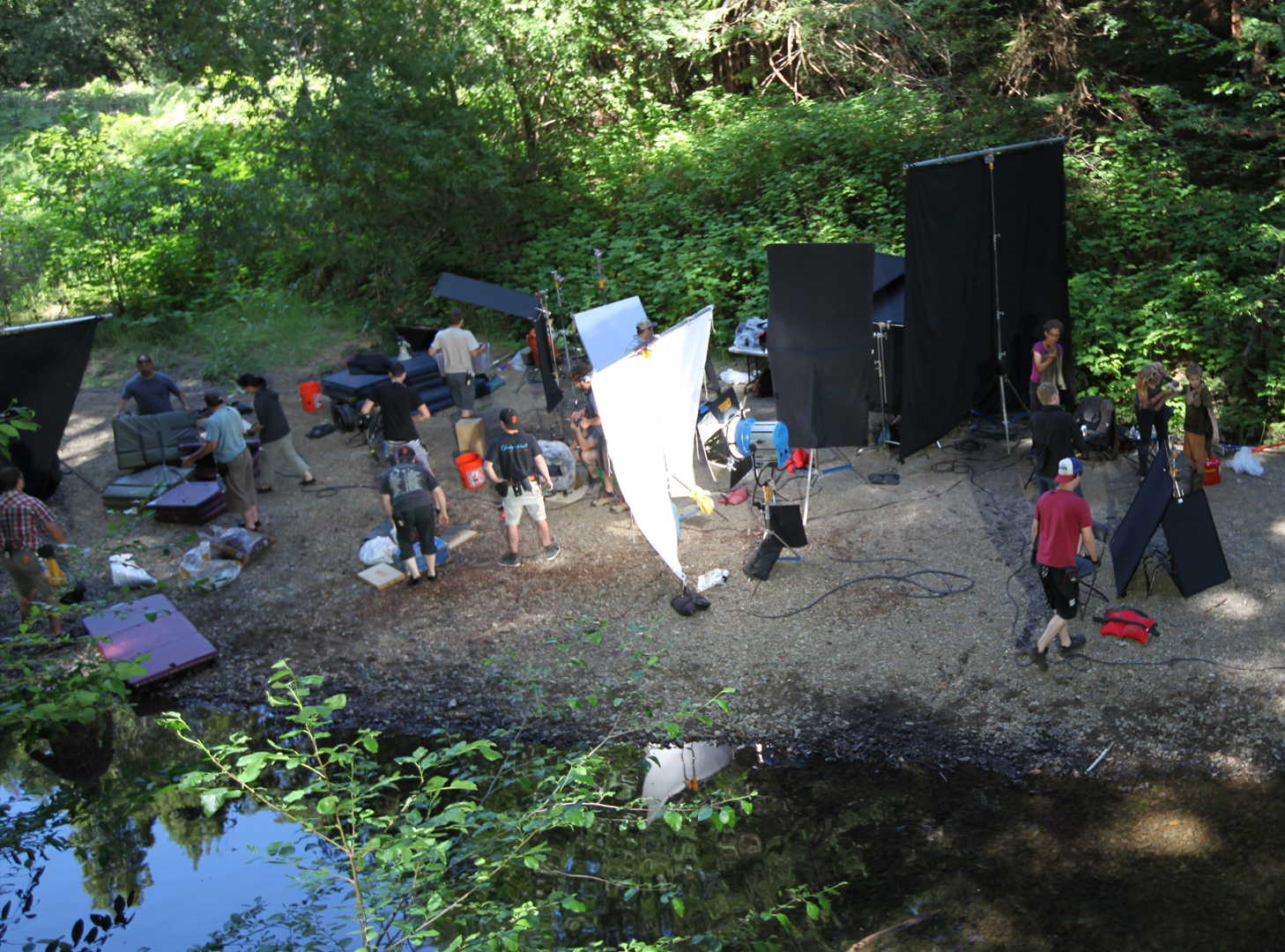


Building our Basilisk
We finished the film in just shy of two years. That’s a little misleading because we spent 6 months in the middle of that process fabricating the monster suit for our Basilisk creature because the custom built creature we commissioned was unusable. Just terrible. I’ve always maintained the belief that if I can’t afford it, I can afford to learn it. Kristin and I spent 6 months not just building our creature, but LEARNING how to build a creature. We studied every step of the process from silicone mold making, foam-latex runs, fiberglass modeling, upholstery foam carving, clay sculpting, and latex airbrushing, just to name a few. Almost every step of this process was a ‘first-time’ experience that was ultimately as ‘gratifying’ in the long term as it was ‘frustrating’ in the short. In 6 months we built a larger, lighter, more mechanically articulate, and visually detailed creature with anatomically correct hard and soft surfaces across its entire form. During production photography, it was worn by a puppeteer as a bodysuit, rigged to a camera car, suspended above a redwood tree, and blasted with buckets of debris while barely sustaining a scratch. We feel like proud parents.





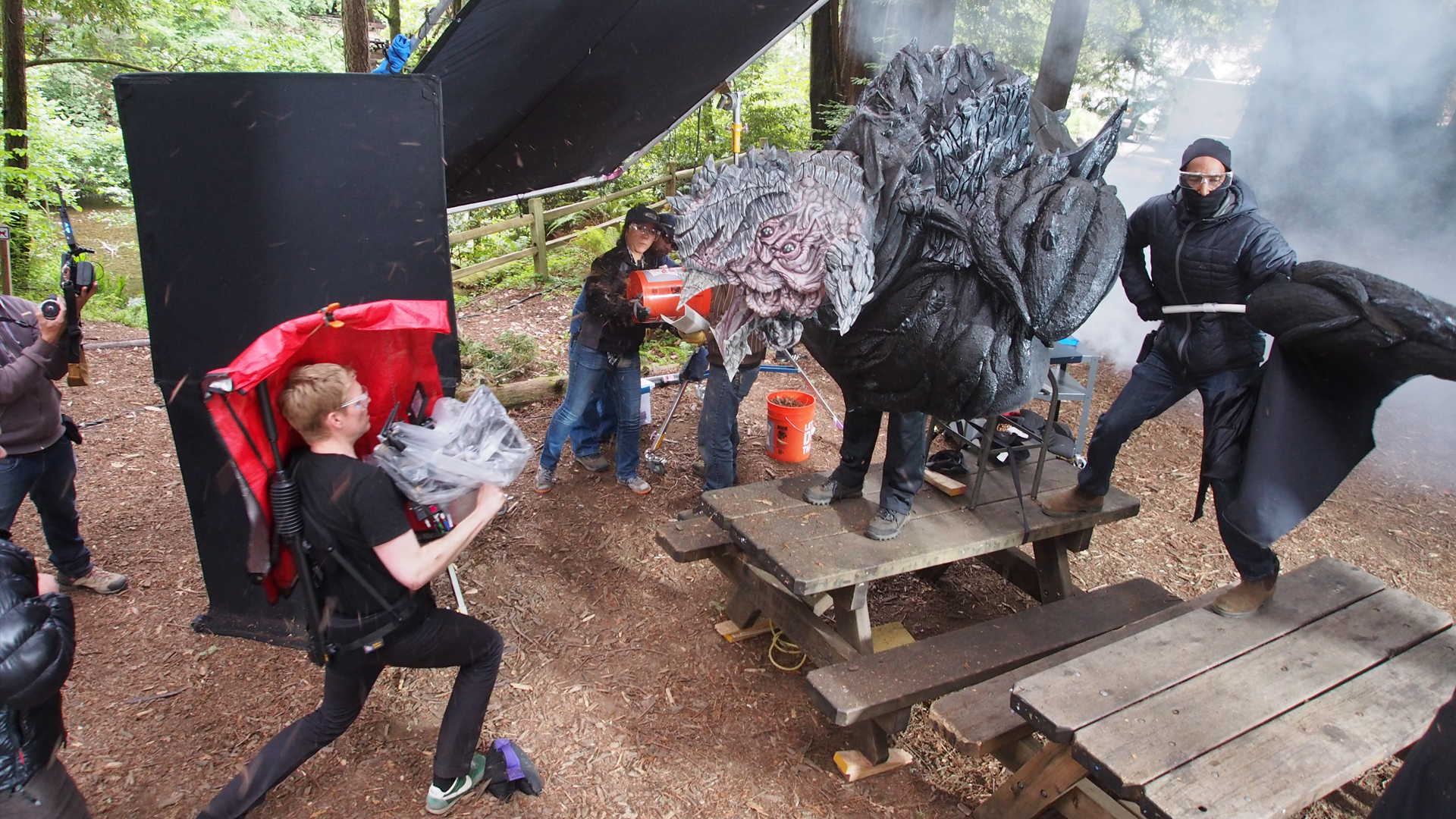

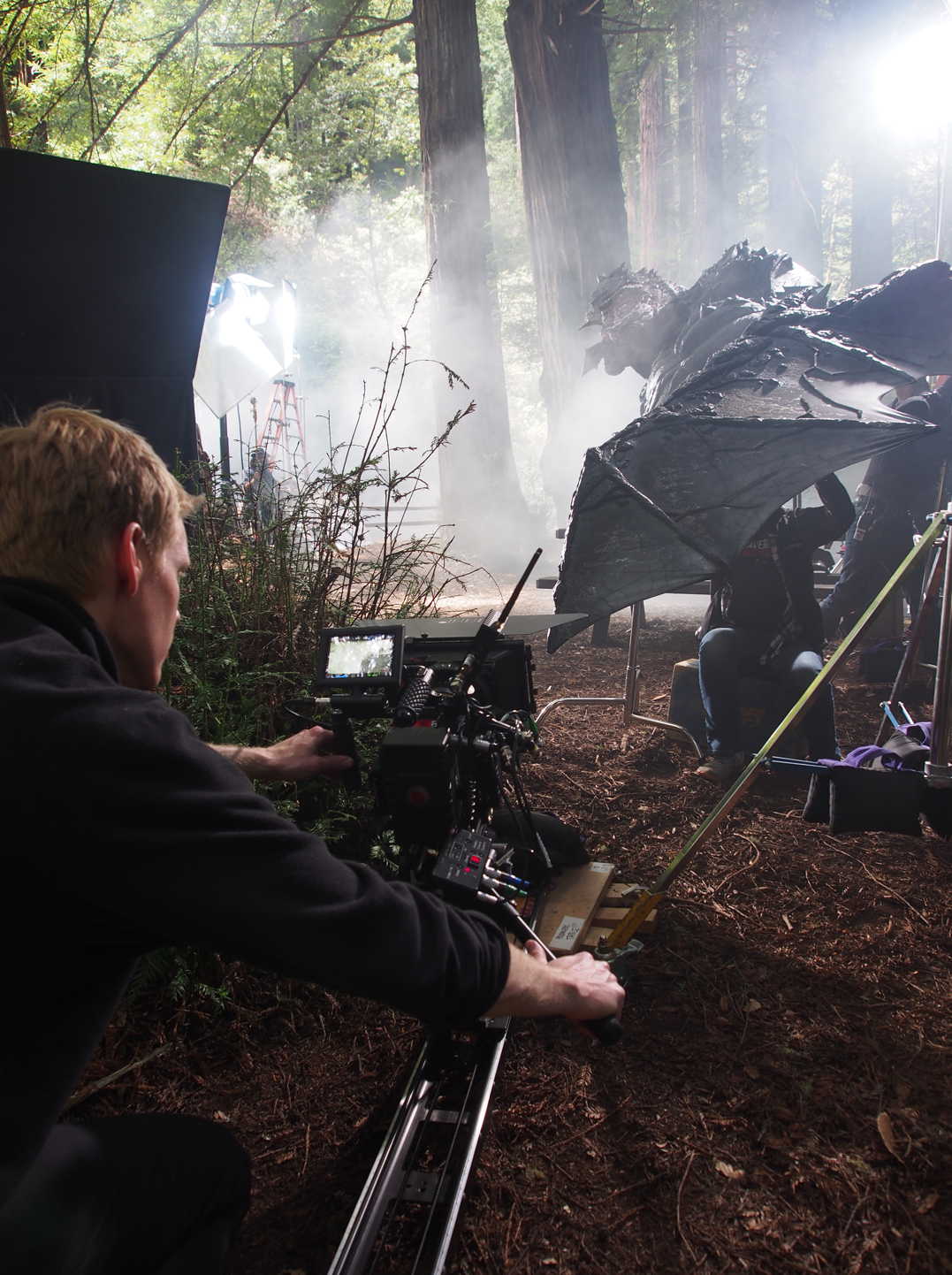
What Now?
Our time is split between promoting the short film and returning to client work through RedGate Films, but we’re very excited to return to long format storytelling soon.
This film is based on Penny Arcade, Inc.’s Lookouts ©2009, which was written and illustrated by Jerry Holkins and Mike Krahulik. It was produced with the express written consent of and with a limited license from Penny Arcade Inc.


